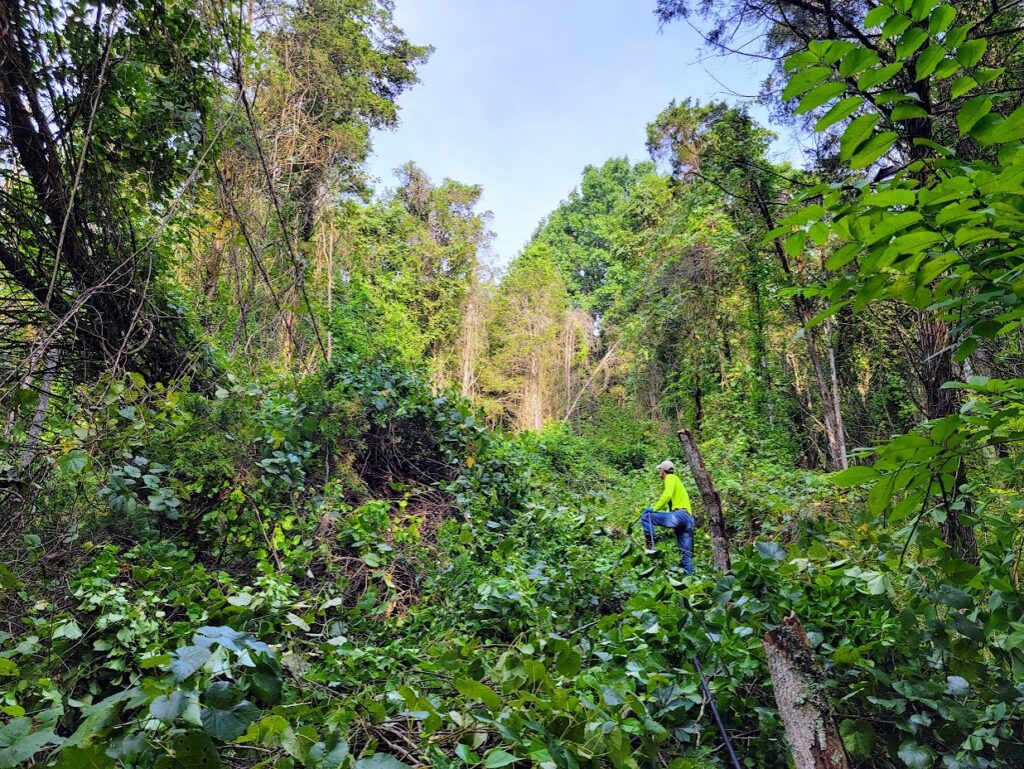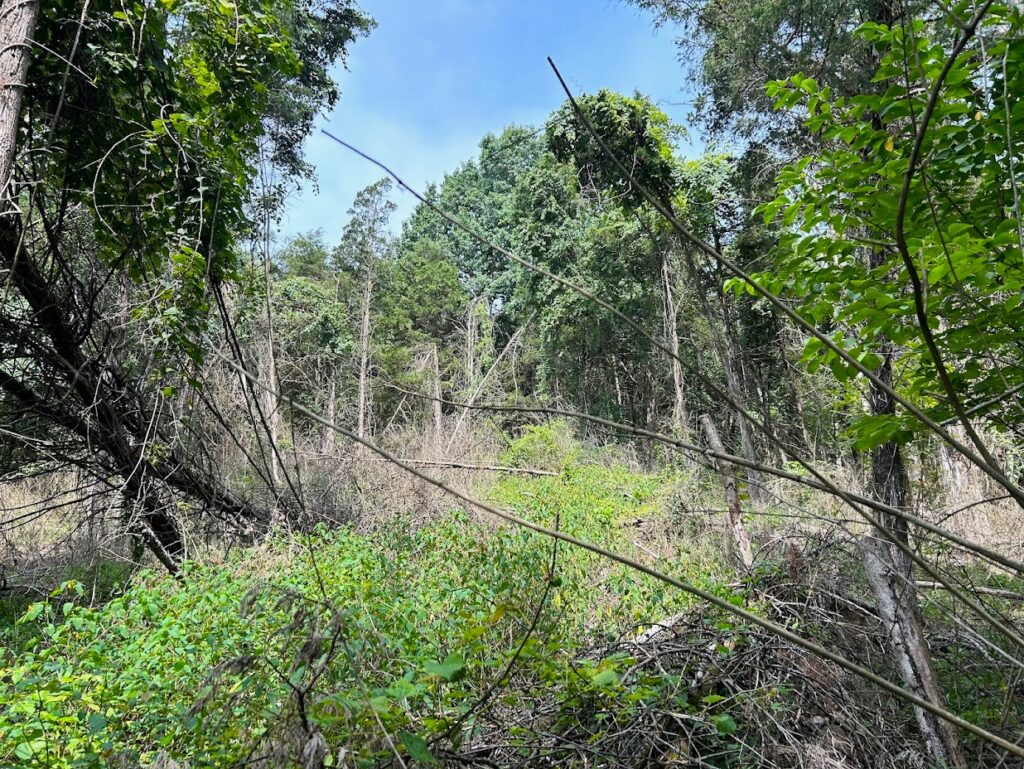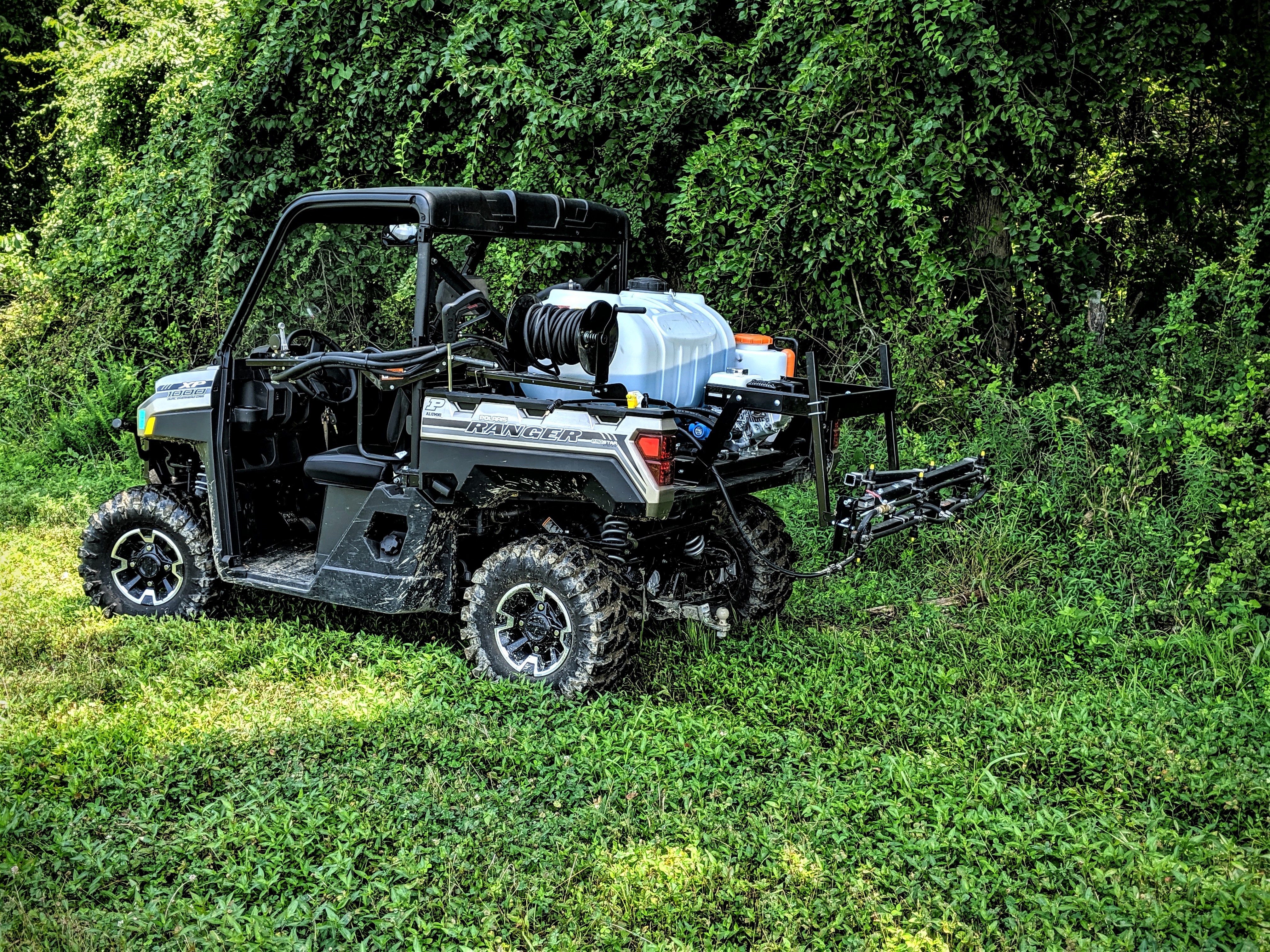Invasive Plant Species Management
Invasive plant species exist as both herbaceous and woody exotic plants. They tend to grow and spread very rapidly, compared to native species, negativity affecting the overall health, quality, productivity, as well as the regenerative abilities of a habitat. Although “invasive species” by definition is a non-native/exotic species, the term “invasive” may also be used to describe the behavior of certain native plants. Such species include black locust, tulip poplar, spicebush, American sycamore, and more. Although these native “invasives” may not usually be a cause for concern, in certain cases it may be recommended to reduce the density of these plants to allow space for other, more desirable species.
Why Managing Invasive Plant Species is Important
Invasive plants are able to suppress native regeneration by outcompeting our native plant species for the same sunlight, water, and nutrients. They are also able to better compete against our native plants due to the invasive plant’s longer growing season and aggressive behavior. Areas containing high densities of invasive plants are considered lower quality habitat due to diminished growth of native plants which provide vital sources of food for wildlife. Forest habitats with high amounts of invasive plants also produce (regenerate) fewer, quality desirable native timber species. Therefore, by managing and treating invasive plants, it has a direct and positive impact on the overall health, quality, and productivity of a habitat as well as promote native regeneration.
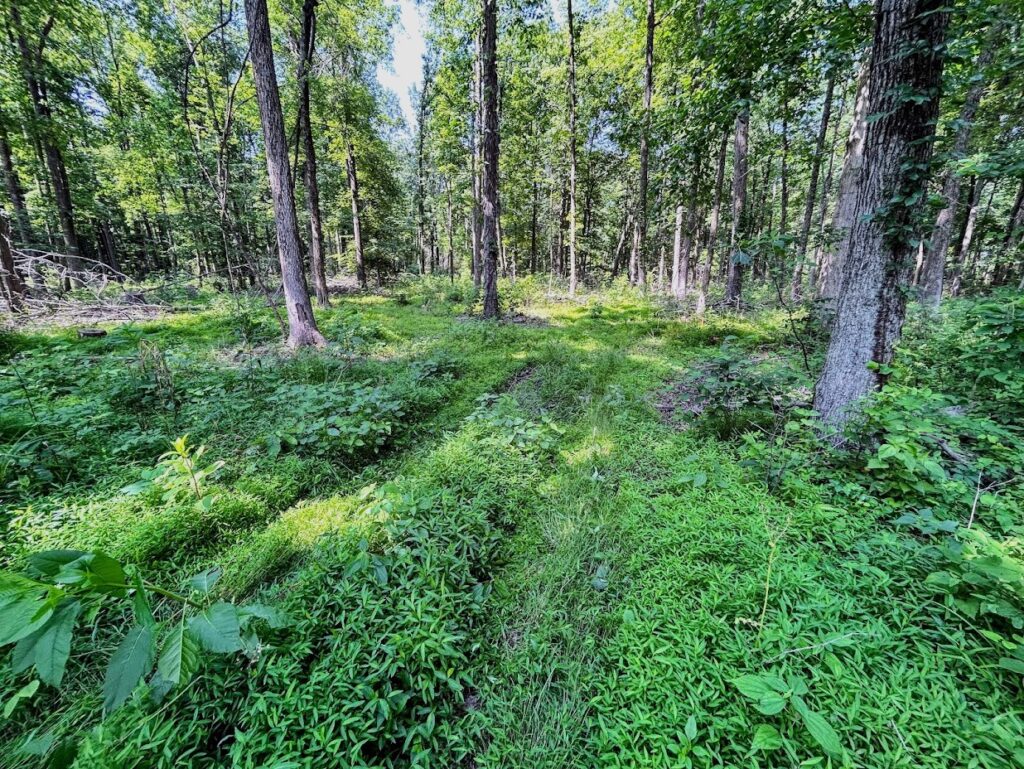
How Invasive Plants are Managed/Treated
Invasive plant management involves either the mechanical removal and/or treatment of herbicide to treat the undesirable plants. The specific management prescription is determined by the specific target species, extent of the invasion (density), treatment season, and accessibility of the property.
Options for Herbicide Delivery
Invasive plants can be treated with herbicide by either foliar spraying, basal-bark treatments, hack-and-squirt treatments, or cut-stump treatments. Foliar spraying in a forested habitat can be performed by using backpack sprayers as well as hand-held or boom sprayer set-ups on ATV’s, UTV’s, tractors, etc. Backpack sprayers can also be utilized to basal-bark treat invasive plants, which involves mixing herbicide in crop oil and applying it to the bottom portions of trees/shrubs to be absorbed through the bark. An alternative treatment option to basal-bark treatments are hack-and-squirt treatments which involved cutting into the tree and injecting/depositing herbicide into the cuts. Large invasive plants can be mechanically removed by the use of chainsaws and/or brush saws, and the stumps should be treated with herbicide, which is called the cut-stump method. Spraying the stumps after cutting prevents regrowth/resprouting of the plant by killing its root structure.
Options for Mechanical Removal
Aside from the cut-stump method, if the plant invasion is severe enough, invasives can be removed mechanically. Options for mechanical removal include utilizing a heavy piece of machinery/equipment, such as a skid steer or excavator, with various head attachments to mulch, cut, grind, and/or clear areas of dense vegetation. It is generally recommended to perform a follow-up herbicide treatment by broadcast spraying the cleared areas to prevent resprout of the undesired plants.
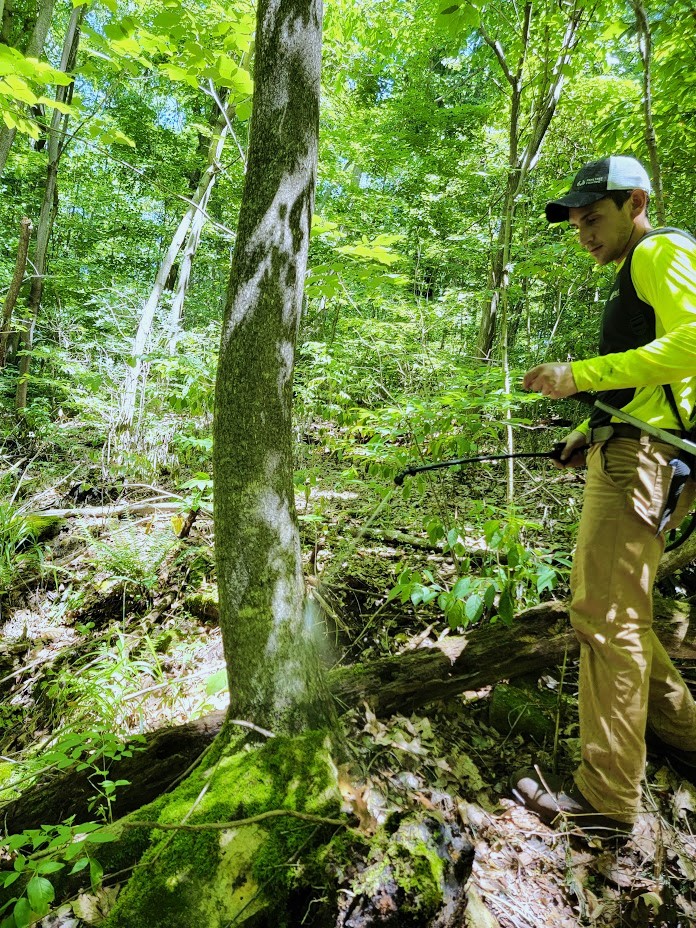
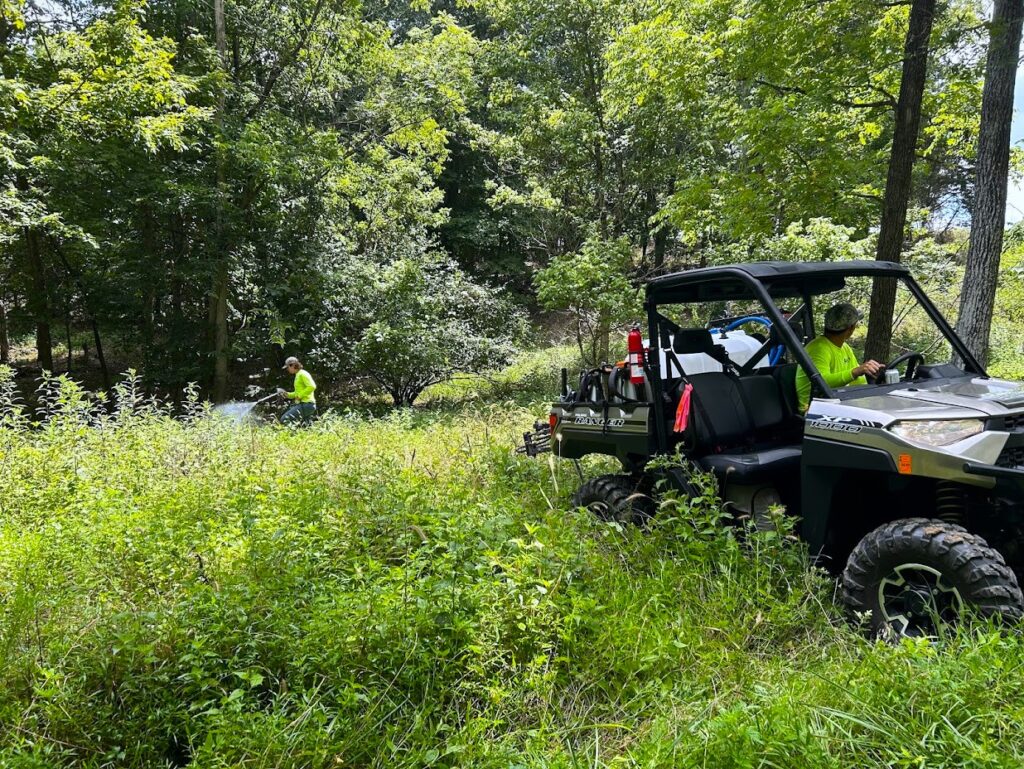
More information:
Indiana DNR’s page on invasive plant species: https://www.in.gov/dnr/naturepreserve/4736.htm
